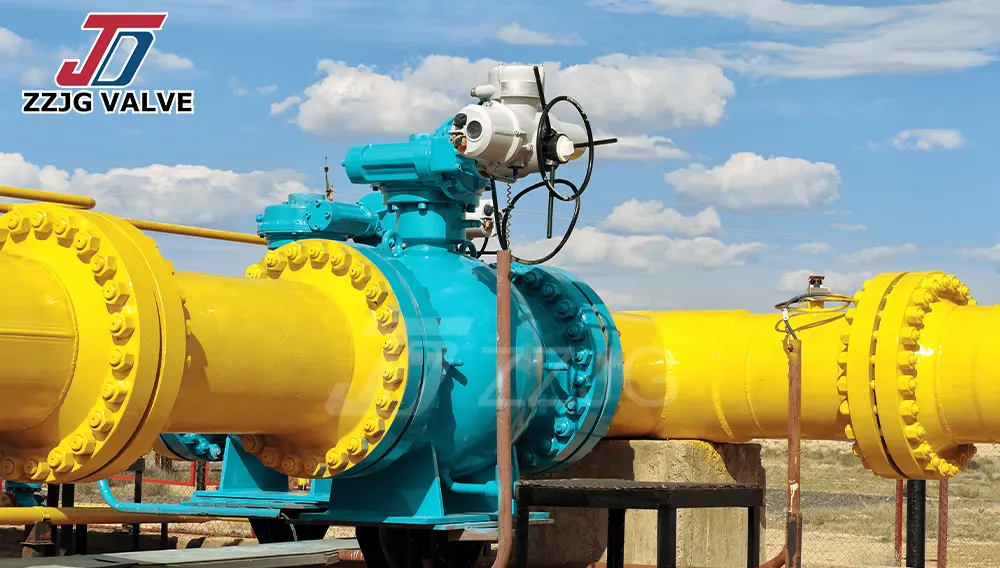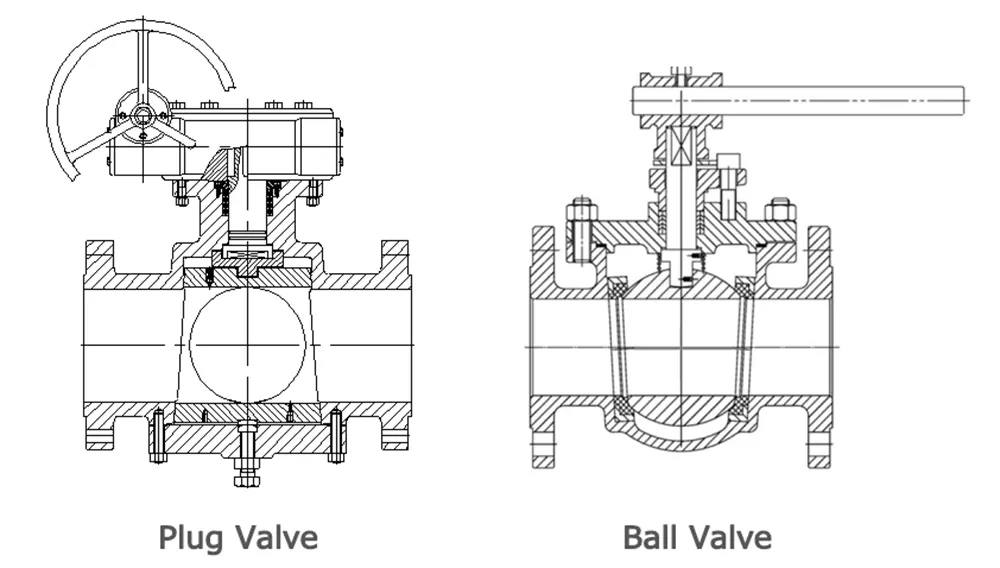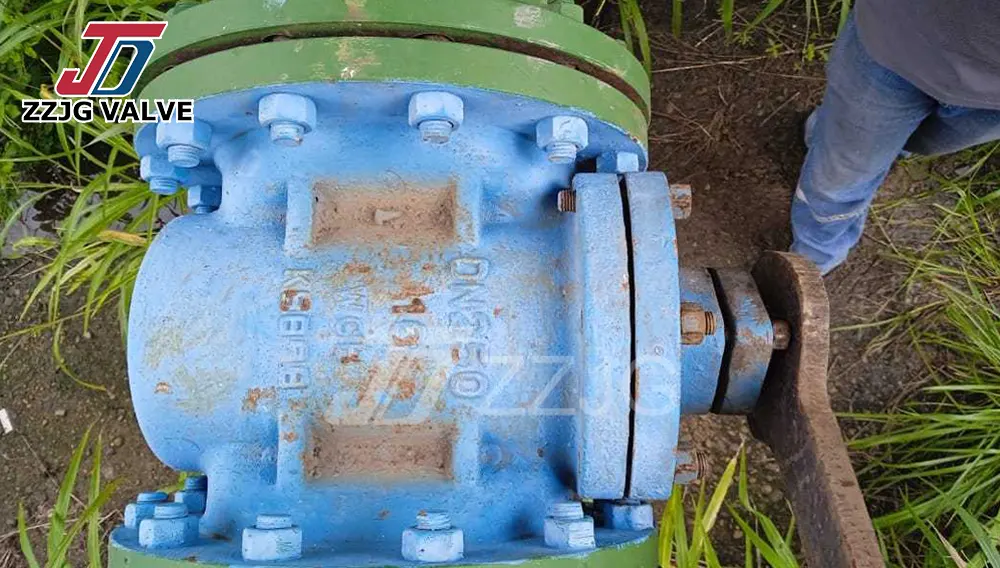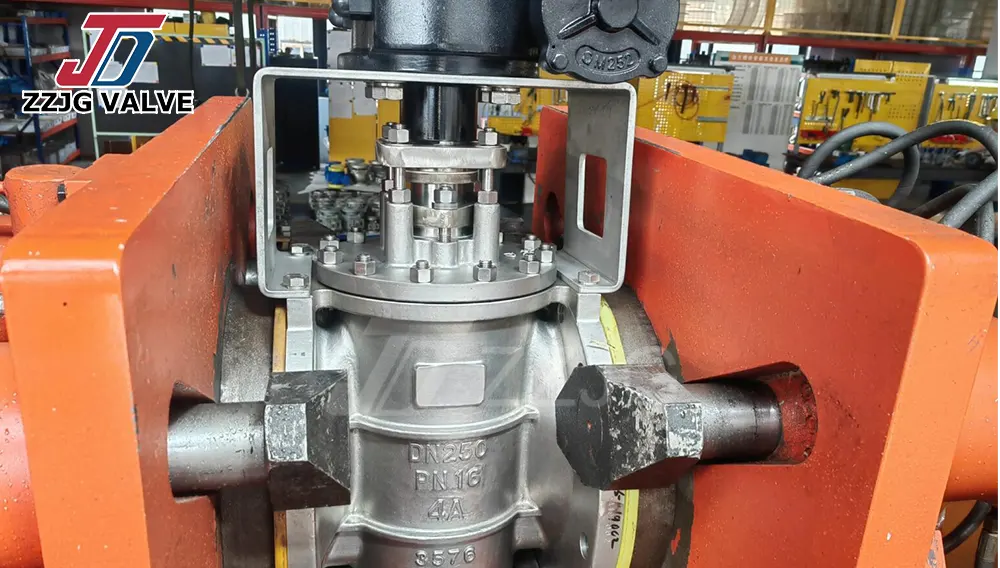Ball Valves vs Plug Valves: Key Differences and Selection Guide for Industrial Applications
Ball valves and plug valves are two common rotary valves. They are like twin brothers, but they have their own characteristics in industrial applications. The following is an analysis and comparison of some common contents.
1. Structure & Working Principle
- Structure: The core component is a ball with a through hole (usually spherical), which controls the fluid on and off by rotating 90°.
- Working mode: It opens when the through hole of the ball is aligned with the pipeline, and closes when the through hole is perpendicular to the pipeline after rotating 90°.
- Type: It is divided into floating ball valve (relying on the medium pressure to press the valve seat) and fixed ball valve (with support shaft, suitable for high pressure).
- Structure: A conical or cylindrical plug is used as the opening and closing part, and the plug body has a channel, and the direction of the channel is adjusted by rotation.
- Working mode: The plug rotates 90°or 180°to align the channel with the pipeline (open) or misalign (close).
- Type: Lubricating type (seal grease needs to be injected) and non-lubricating type (relying on precision fit seal).
Note: Both valves can be used as regulating valves by changing the shape of the through hole. The most common one is the triangular through hole. At the same time, both valves are often used as the main choice of multi-way valves.
2. Sealing
Ball valve
- Sealing method: soft seal (such as PTFE, rubber) or metal seal. Soft seal has high leakage level (up to level VI), but poor temperature resistance (usually ≤200℃).
- Bidirectional sealing: Most ball valves support bidirectional sealing, and there is no flow restriction after closing.
Plug valve
- Sealing method: Relying on the precise fit between the conical plug body and the valve body, or enhancing the seal by grease (lubricated type).
- Leakage level: Metal seals have a low leakage level (usually level IV), but are resistant to high temperatures (up to 600℃ or more).
- One-way sealing: Some plug valves need to pay attention to the flow direction, otherwise it may affect the sealing effect.
Note: The core parts of the high-end products of both valves are ground, which has achieved a good sealing effect, reduced friction and increased service life.
3. Flow Resistance & Pressure Drop
Ball valve
- Full-bore design: The flow channel is consistent with the pipe diameter, and the flow resistance is extremely low (almost negligible), which is suitable for occasions requiring low resistance (such as pump outlets and long-distance pipelines).
- Partial-bore design: Low cost, but large pressure drop.
Plug valve
- Flow channel structure: The cross-sectional area of the channel is usually smaller than that of the pipe, resulting in higher flow resistance and obvious pressure drop, especially at small openings.
- Applicable scenarios: Suitable for medium and low pressure systems that are not sensitive to pressure drop.
4.Operating Torque & Opening and Closing Speed
Ball valve
- Relatively small operating torque: The friction between the ball and the valve seat is small, and opening and closing is easy (especially soft seals).
- Quick opening and closing: The operation can be completed by rotating 90°, which is suitable for emergency cutting. Plug valve.
- Large operating torque: The friction between the conical plug and the valve body is large, and a larger torque is required under high pressure (lubricated type can be improved).
- Slow opening and closing: Some designs require multiple rotations and are not suitable for frequent operations.
5. Applicable Media & Working Conditions
Ball valve
- Media type: Applicable to clean liquids and gases (such as oil, natural gas, water). Soft seals are not suitable for media containing solid particles or prone to scaling.
- Temperature range: Soft seals ≤200℃, metal seals can reach 500℃.
- Pressure level: High pressure has obvious advantages (fixed ball valves can reach Class 1500).
Plug valve
- Media type: Resistant to media containing particles, high viscosity or easy to crystallize (lubricated type can reduce the risk of clogging).
- Temperature range: Metal seals have excellent high temperature resistance (up to 600℃ or above).
- Pressure level: Mostly used for medium and low pressure (below Class 600).
6.Maintenance & life
Ball valve
- Easy maintenance: The valve seat is easy to replace, but the soft seal is easy to wear (need to be replaced regularly).
- Life: Long life in clean media, and granular media may accelerate the wear of the valve seat.
Plug valve
- Maintenance requirements: Lubricated type requires regular filling of sealing grease, non-lubricated type requires high processing accuracy, and maintenance is more difficult.
- Lifespan: Metal seals have good wear resistance, but they may leak due to wear after long-term use.
7. Cost & size
Ball valve
- Cost: Full-bore and high-pressure ball valves have high costs, but small and medium-caliber standardized products are moderately priced.
- Size range: Wide coverage (DN10~DN1200), suitable for large pipeline applications.
Plug valve
- Cost: Simple structure, low cost for small and medium-caliber, but the price of high-pressure customized products is rising.
- Size range: Mostly used for small and medium-caliber (DN15~DN300).
8. Typical Application Scenarios
Ball valve
Long-distance oil and gas pipelines, emergency shut-off of chemical processes, water treatment systems. Occasions that require fast opening and closing, low flow resistance, and two-way sealing.
Plug valve
Catalyst media in refineries, high-viscosity fluids in the food industry, and high-temperature steam systems. Conditions where the media is dirty, requires high temperature resistance, or requires frequent flow adjustment.
Note: The main reference for selecting plug valves and ball valves is still the physical properties of the medium, especially the solid content.
Ball valves and plug valves are both rotary valves have 90°operation, but they differ significantly in design, performance, and application suitability. Ball valves dominate in high-flow, high-pressure systems, while plug valves excel in rugged, high-temperature, or multi-directional flow control.
Previous: Plug Valve and Ball Valve Difference Introduction
Next: Differences in Applications between Plug Valves and Ball Valves
Recent News
- What Is a Three-way Plug Valve
- Philippine Long-term Customers Visit ZZJG Valve Factory
- Ukrainian customer visited ZZJG for inspection
- How To Choose The Appropriate Paint For a Plug Valve?
- Key Factors for Selecting Lined Plug Valve vs. Soft Seated Plug Valve
- Mongolian Customers Visit ZZJG VALVE to Inspect Plug Valves